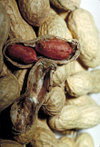What is anaphylaxis?
While there is no universally accepted definition of anaphylaxis (Anna-fill-axis}, most physicians would agree that it is a life-threatening allergic reaction to a specific trigger (food, insect sting, medication, exercise, and latex) in a person who has become sensitized. There is disagreement, however, about the constellation of symptoms by which it can be recognized.
How common is anaphylaxis?
A conservative estimate is that two percent of the population (approximately 600,000 Canadians) may be affected by potentially life-threatening allergies. The incidence may be higher in children and it has increased dramatically in the last decade.
What is the difference between anaphylactic and anaphylactoid!
Anaphylactic and anaphylactoid reactions are similar in their clinical presentation and treatment. The only difference is the chemical reactions that are taking place. Anaphylactic reactions are mediated by IgE (an immunoglobulin) and anaphylactoid reactions are not.
What is the best treatment for anaphylaxis?
Epinephrine, a hormone produced in the body by the adrenal glands, reverses the negative cardiovascular effects of an anaphylactic reaction and helps to dilate the airways. It is the initial treatment of choice for anaphylaxis and can be used also during a life-threatening asthma attack. For optimal effect, an injection of epinephrine must be administered at the very beginning of a reaction. While life saving, epinephrine only provides supportive emergency treatment and cannot replace thorough assessment and treatment in hospital.
How can I recognize a reaction?
Each allergic individual will react in a specific way (i.e., with specific symptoms). This tends to be consistent from reaction to reaction unless the mode of contact is altered (i.e. ingestion, injection, inhalation). The severity of reaction, however, is less predictable. The quantity of allergen (trigger), asthma, the use of beta-blockers (cardiovascular medication) can affect it and this is why strict avoidance and the immediate use of epinephrine are imperative. Many people watch for hives to develop, but these may not be present.
Mild Symptoms
tingling, numbness, pain in the lips and tongue;
itchy eyes, nose, face;
flushing of the face and body;
Moderate to Severe Symptoms
swelling of the eyes, face, lips, tongue and throat;
difficulty swallowing;
hives;
abdominal cramps, vomiting, diarrhea;
wheezing, coughing, difficulty talking and breathing;
a sense of foreboding, fear and apprehension;
weakness and dizziness;
drop in blood pressure, loss of consciousness, death.
Most serious reactions occur rapidly and respond quickly to epinephrine. Some life-threatening reactions may have a delayed onset or recur several hours after seemingly effective treatment.
To learn more visit www.anaphylaxis.org or contact
Anaphylaxis Canada
416 Moore Avenue, Suite 306
Toronto, ON M4G 1C9
Tel: 416.785.5666
Fax: 416.785.0458
E-mail: info@anaphylaxis.ca
©Anaphylaxis Canada
Reproduced with permission from Anaphylaxis Canada
More resources
In 2002, the Anaphylaxis Working Group of Calgary Health Region Nursing Professional Resources prepared a pamphlet on anaphylaxis. For more information, contact:
Irene Hanrahan
Nursing Professional Resources
Tel: 403.944.1641
E-mail: irene.hanrahan@calgaryhealth.ca
Copyright Alberta Association of Registered Nurses Mar 2005
Provided by ProQuest Information and Learning Company. All rights Reserved



